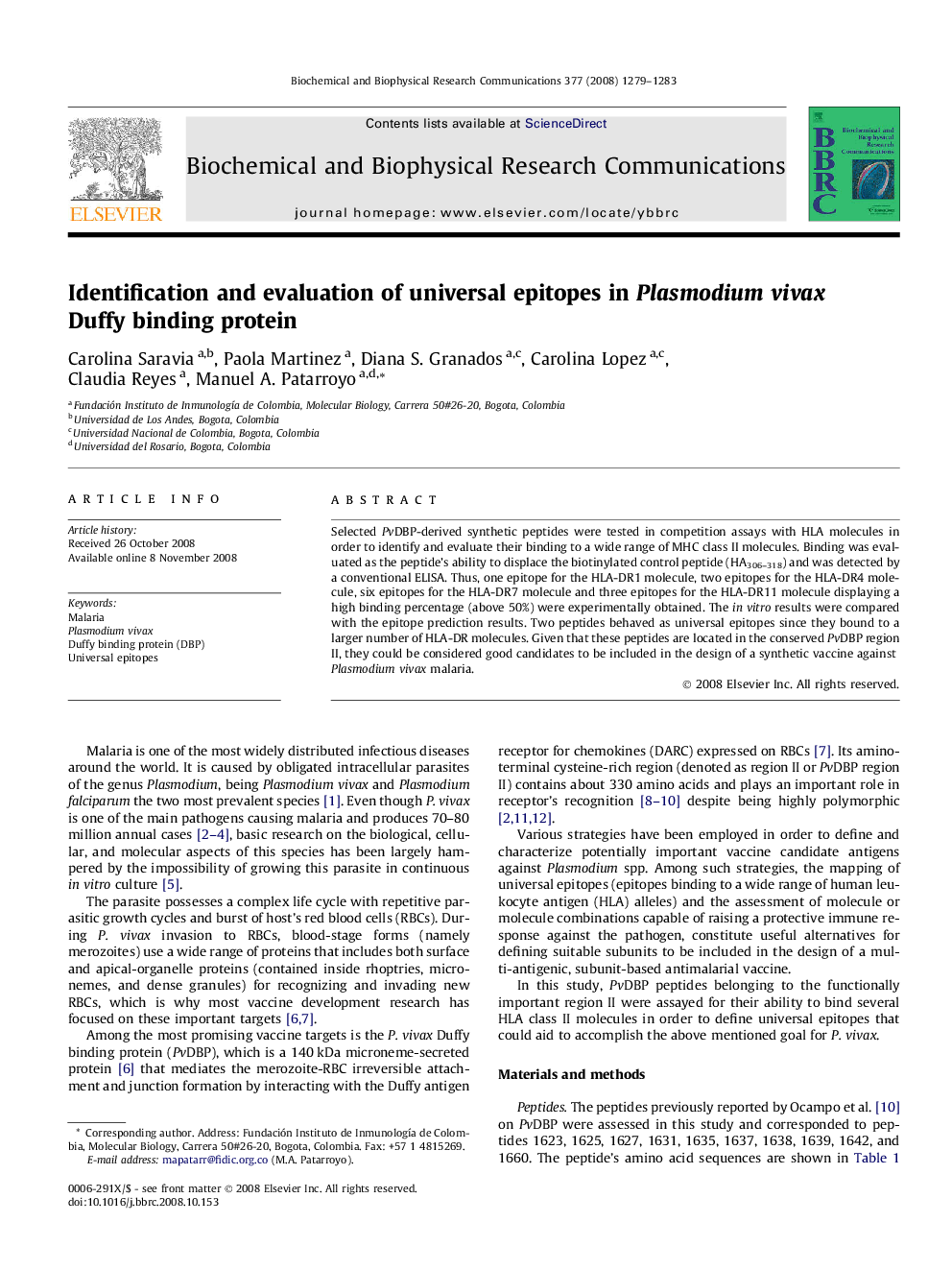| Article ID | Journal | Published Year | Pages | File Type |
|---|---|---|---|---|
| 1934119 | Biochemical and Biophysical Research Communications | 2008 | 5 Pages |
Selected PvDBP-derived synthetic peptides were tested in competition assays with HLA molecules in order to identify and evaluate their binding to a wide range of MHC class II molecules. Binding was evaluated as the peptide’s ability to displace the biotinylated control peptide (HA306–318) and was detected by a conventional ELISA. Thus, one epitope for the HLA-DR1 molecule, two epitopes for the HLA-DR4 molecule, six epitopes for the HLA-DR7 molecule and three epitopes for the HLA-DR11 molecule displaying a high binding percentage (above 50%) were experimentally obtained. The in vitro results were compared with the epitope prediction results. Two peptides behaved as universal epitopes since they bound to a larger number of HLA-DR molecules. Given that these peptides are located in the conserved PvDBP region II, they could be considered good candidates to be included in the design of a synthetic vaccine against Plasmodium vivax malaria.
